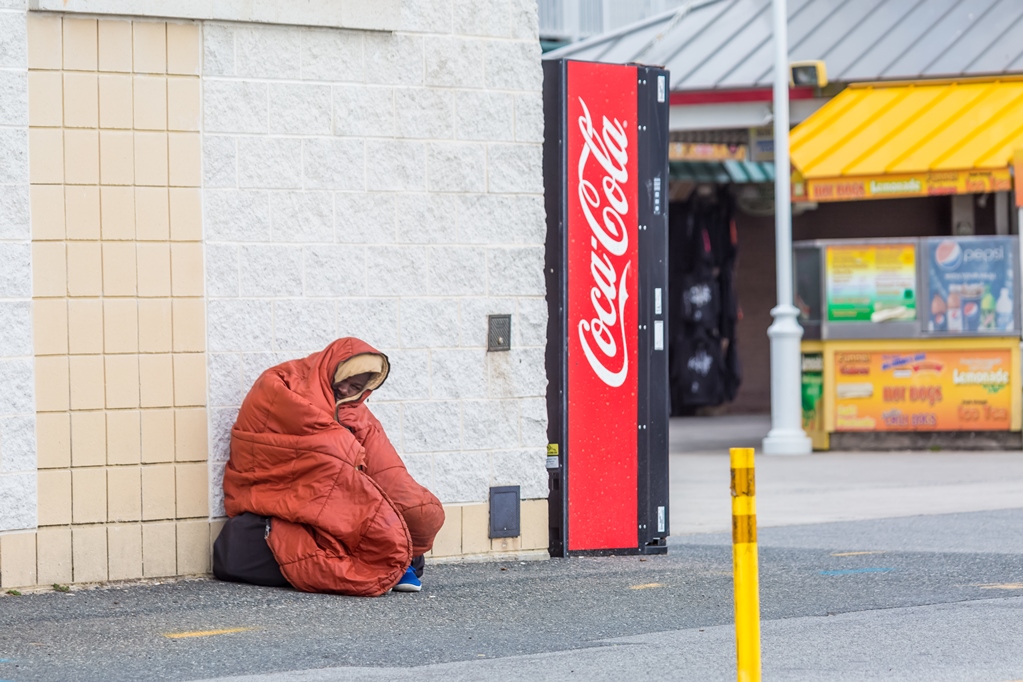

In 2018, six tenants moved out to lead fully independent lives, Haapa says. Some stay seven years or more others leave after one or two. But after a three-month trial, tenants’ contracts are permanent – they can’t be moved unless they break the rules (Rukkila does not allow drug or alcohol use some other Housing First units do) or fail to pay the rent. Hardly any of the tenants come straight from the street, Haapa says, and those who do can take time to adjust to living indoors. And that is “easier when you are actually doing something together, rather than in a formal interview”, Haapa says. “A lot of it is really about talking,” says Henna Ahonen, a trainee social worker. Tatu Ainesmaa’s new home: Rukkila in Malminkartano, Helsinki. Assistant manager Saara Haapa says the work ranges from practical help navigating bureaucracy and getting education, training and work placements to activities including games, visits and learning – or re-learning – basic life skills such as cleaning and cooking. The support has to be there.”Īt Rukkila, seven staff support 21 tenants. “Many long-term homeless people have addictions, mental health issues, medical conditions that need ongoing care. “Services have been crucial,” says Helsinki’s mayor, Jan Vapaavuori, who was housing minister when the original scheme was launched. In England, meanwhile, government figures show the number of rough sleepers – a small fraction of the total homeless population – climbed from 1,768 in 2010 to 4,677 last year (and since the official count is based on a single evening, charities say the real figure is far higher).īut Housing First is not just about housing. The city’s deputy mayor Sanna Vesikansa says that in her childhood, “hundreds in the whole country slept in the parks and forests. Rough sleeping has been all but eradicated in Helsinki, where only one 50-bed night shelter remains, and where winter temperatures can plunge to -20C. Since its launch in 2008, the number of long-term homeless people in Finland has fallen by more than 35%. Housing First’s early goal was to create 2,500 new homes. With state, municipal and NGO backing, flats were bought, new blocks built and old shelters converted into permanent, comfortable homes – among them the Rukkila homeless hostel in the Helsinki suburb of Malminkartano where Ainesmaa now lives. Instead, a home should be the secure foundation that makes it easier to solve your problems.” “To say, look, you don’t need to solve your problems before you get a home. “We decided to make the housing unconditional,” says Kaakinen. We decided to reverse the assumptions.”Īs in many countries, homelessness in Finland had long been tackled using a staircase model: you were supposed to move through different stages of temporary accommodation as you got your life back on track, with an apartment as the ultimate reward. They had a very long history in Finland, and everyone could see they were not getting people out of homelessness. “We had to get rid of the night shelters and short-term hostels we still had back then. Juha Kaakinen, CEO of the Y-Foundation, which provides low-cost flats to homeless people across Finland.

“It was clear to everyone the old system wasn’t working we needed radical change,” says Juha Kaakinen, the working group’s secretary and first programme leader, who now runs the Y-Foundation developing supported and affordable housing. When the policy was being devised just over a decade ago, the four people who came up with what is now widely known as the Housing First principle – a social scientist, a doctor, a politician and a bishop – called their report Nimi Ovessa (Your Name on the Door). That, after all, is all part of having a home – and part of a housing policy that has now made Finland the only EU country where homelessness is falling.

It is important that they are tenants: each has a contract, pays rent and (if they need to) applies for housing benefit. It was clear to everyone the old system wasn’t working.

Upstairs is where the 21 tenants, men and women, most under 30, live. Downstairs in the two-storey block is a bright communal living and dining area, a spotless kitchen, a gym room and a sauna (in Finland, saunas are basically obligatory).


 0 kommentar(er)
0 kommentar(er)
